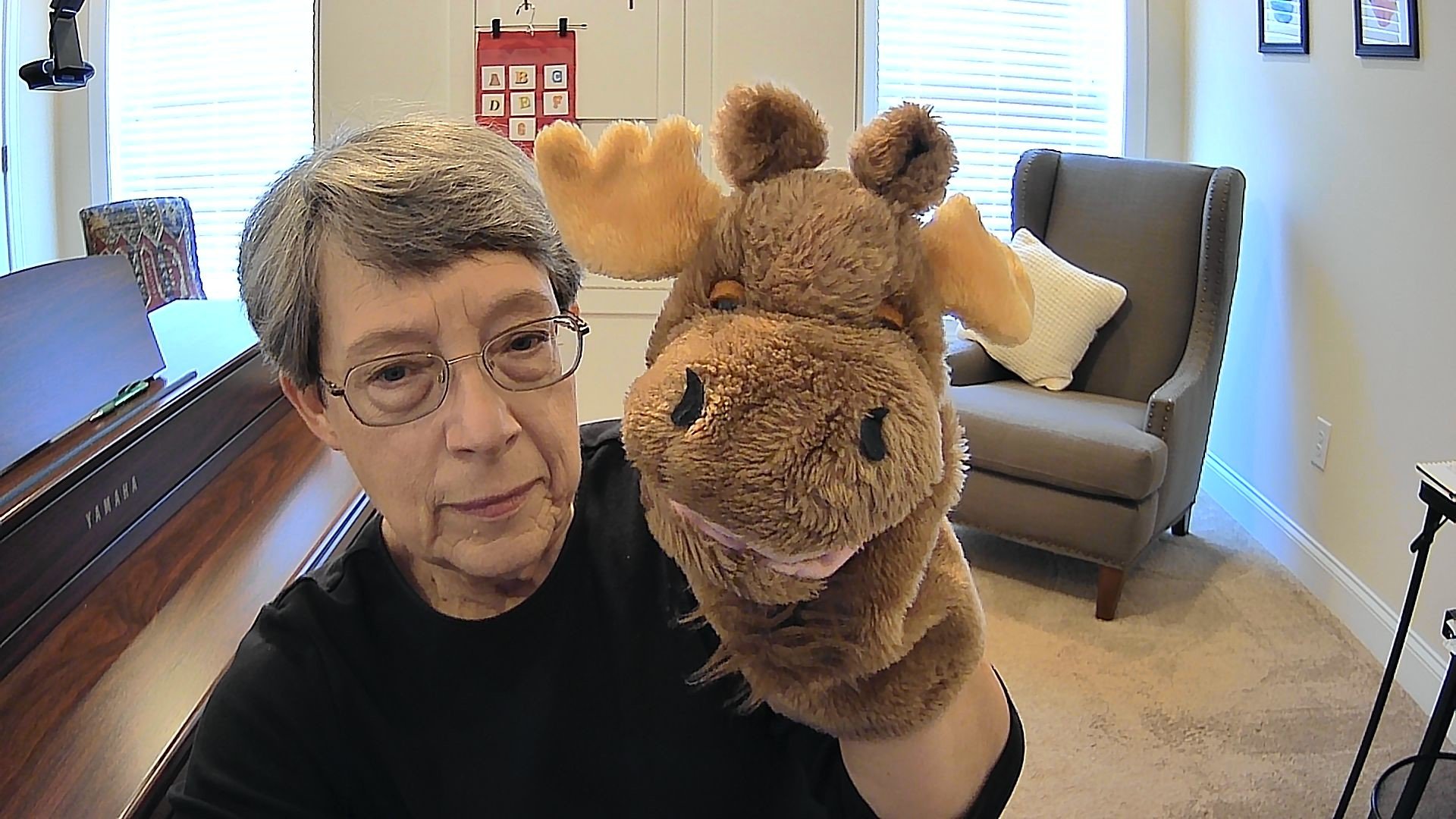Engaging Young Minds: 5 Creative Tools for Captivating Online Beginner Piano Students
Introduction: Teaching piano to young beginners can be both rewarding and challenging. Keeping their attention can sometimes feel like trying to catch fireflies in a jar. However, with a bit of creativity and the right tools, it becomes an exciting journey of discovery for both teacher and student. Here are five ingenious tools I use to captivate the attention of my young beginner piano students.
Piano Kit: White board, scale folder, multipurpose board game, pouch with writing implements, game pawns and dice.
Hand Puppet Pal: Meet Morris, the Music Moose, the friendly hand puppet who frequently joins us in lessons. Morris is perhaps the best teaching assistant I have ever had. First, he never speaks out loud because he is very shy, he only whispers in my ear. Five- and six-year-old beginners immediately want to know what he said! He is a good listener and always finds something he likes about what the student has played. For example, after he whispers in my ear, I relay his comments to the student, “Morris says he really likes the ways you kept the beat steady. Now he has a question for you. He wants to know if there are any markings in your song that tell you to play loud or soft.”
My very able teaching assistant, Morris the Music Moose
Staff Whiteboard: Music notation can sometimes seem like a mysterious language to beginners, but not with our trusty staff whiteboard. Whether it's drawing note heads, stems, or even composing simple melodies together, the whiteboard makes learning to read music an interactive and visual adventure. I use a white board which also has a piano keyboard at the top which is useful for finding keys, intervals, scales and chords, drawing key signatures etc.
Dice: Who said learning music theory is dull? Enter the piano dice games – a playful twist on traditional learning methods. When you need a quick game to help the student refocus, a dice game is a good solution. For example, a dice game is useful for learning the names of keys. Student and teacher each put a pawn on the lowest note on the keyboard, then take turns rolling and naming the keys they land on. Whoever gets to Middle C first wins. This game can be extended to name the key, then name the note a third higher or lower, playing chords or scales based on the note, etc.
All-Purpose Board Game: This game (pictured above in the music kit) will work for whatever theory concepts for which you have flashcards - identifying notes, intervals, chords, clapping rhythms. Kids love to beat the teacher! I put the game board under my overhead camera, and we are good to go. My students all have a copy of this game board in their folders so they can move their own pawns.
My choice board.
Choice Board: Empowering students with choice is a cornerstone of effective teaching. The choice board puts the power in their hands, allowing them to choose the order of activities for the lesson. The choice board consists of seven laminated cards with the letters of the musical alphabet. With a dry erase marker, on the back of each card I write an activity that we need to accomplish during the lesson such as written work, sing one of your assigned songs, play a game, or learn a new song. The student chooses a letter and we do the task listed on the back, continuing until we have used all the letters. The students really like the element of surprise, especially if there are a few wacky cards thrown in the mix, like “With your eyes closed, play your favorite song, or “Play a song but substitute a foot stomp for each middle C.”
By incorporating creative tools like hand puppets, staff whiteboards, dice, all-purpose board games, and giving the student choices, it is possible to create an engaging, dynamic and immersive online learning experience that captivates young minds and helps to instill a passion for music that will resonate for years to come.


